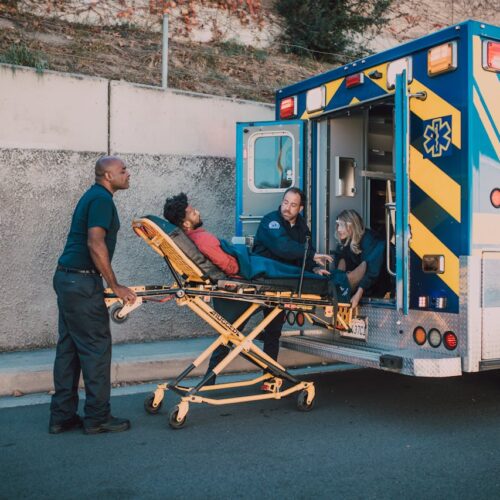On Nov. 13 and 14, state and local leaders from all 50 states convened in Washington, DC, for the 50-State Summit on Public Safety. Sponsored by The Council of State Governments (CSG) Justice Center and the Association of State Correctional Administrators, the summit prepared state leaders to develop effective solutions that elected officials at all levels of government can support to solve public safety challenges.
Speakers at the summit provided unique insights into the criminal justice system:
Kentucky Governor Matt Bevin spoke about his belief in redemption and the need to improve the criminal justice system.
John Wetzel, secretary of the Pennsylvania Department of Corrections and chair of the CSG Justice Center’s Executive Committee, closed the summit by urging attendees to fill the “courage vacuum” and take action to make a difference.
Ten opportunities for action emerged over the course of the summit:
- With violent crime rising in some states and decreasing in others, state leaders must diagnose where and how much crime is occurring in their state to develop effective crime-prevention strategies.
- To achieve lasting reductions in crime and recidivism, state and local leaders must develop a coordinated public safety strategy that sustains success and responds to unique state challenges.
- Public safety and health officials must work together like never before to improve responses to people in the criminal justice system who have mental illnesses or substance use disorders.
- County justice systems can successfully use data to inform pretrial decision making, reduce costs, and improve safety.
- Some states have begun to significantly reduce recidivism among people leaving prison through strategies informed by data, and more states can follow suit.
- Scaling up statewide efforts to break the cycle of reoffending among people on probation could have far greater safety and cost-saving benefits than focusing only on people released from prison.
- Probation and parole officers need training and support to engage people on their caseloads proactively instead of simply monitoring them.
- Nearly every state can track recidivism metrics more comprehensively.
- States must continue to use data-driven policy options to reduce corrections costs and growth in prison populations.
- To improve public safety and strengthen communities, states can reinvest savings generated through state policy changes in local efforts to reduce crime and recidivism—an approach that some states have already put into practice.
What’s next?
Each state team at the summit received a workbook from the CSG Justice Center that highlights both national and state-specific analyses of data on crime, arrests, recidivism, correctional populations, and more. These workbooks will be available online in the coming weeks.
The CSG Justice Center will also be developing a web-based report that includes a detailed analysis of the national and state criminal justice data discussed at the summit along with research findings, case studies, and steps that states can take to reduce crime and recidivism, improve outcomes for people who have mental illnesses and substance use disorders, and reduce corrections spending. This report will launch in early 2018.
Also in early 2018, the U.S. Department of Justice’s Bureau of Justice Assistance (BJA) will provide support for up to 25 states to host a State Forum on Public Safety. Criminal justice experts from the CSG Justice Center or the Crime and Justice Institute (CJI) will travel to selected states to facilitate a data-rich public safety discussion between a broad cross-section of policymakers, criminal justice professionals, behavioral health practitioners, and advocates, and meet with state leaders to identify opportunities to increase public safety. States interested in hosting a forum should apply now.
In response to growing calls for police reform in New Jersey, particularly following the shootings of Najee Seabrooks…
Read More Three Things to Know About New Jersey’s Groundbreaking Community Response Legislation
Three Things to Know About New Jersey’s Groundbreaking Community Response Legislation
In response to growing calls for police reform in New Jersey, particularly…
Read More Apply Now: Join a Learning Community for Community and Crisis Response Teams to Improve Responses to Youth
Read More
Apply Now: Join a Learning Community for Community and Crisis Response Teams to Improve Responses to Youth
Read More
 Apply Now: Join a Learning Community Focused on Substance Use and Overdose Community Response Programs
Read More
Apply Now: Join a Learning Community Focused on Substance Use and Overdose Community Response Programs
Read More













